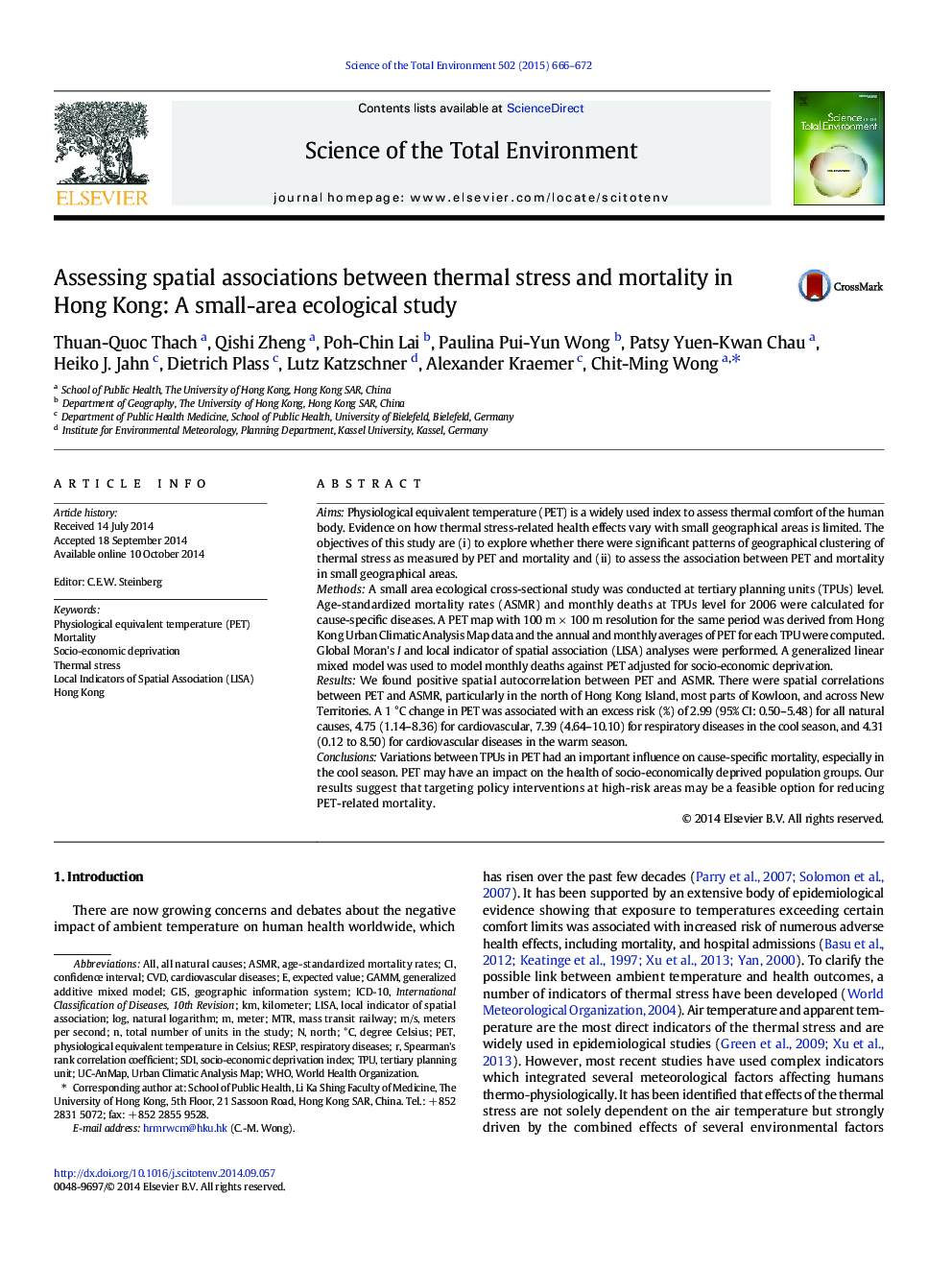| کد مقاله | کد نشریه | سال انتشار | مقاله انگلیسی | نسخه تمام متن |
|---|---|---|---|---|
| 6328578 | 1619772 | 2015 | 7 صفحه PDF | دانلود رایگان |
AimsPhysiological equivalent temperature (PET) is a widely used index to assess thermal comfort of the human body. Evidence on how thermal stress-related health effects vary with small geographical areas is limited. The objectives of this study are (i) to explore whether there were significant patterns of geographical clustering of thermal stress as measured by PET and mortality and (ii) to assess the association between PET and mortality in small geographical areas.MethodsA small area ecological cross-sectional study was conducted at tertiary planning units (TPUs) level. Age-standardized mortality rates (ASMR) and monthly deaths at TPUs level for 2006 were calculated for cause-specific diseases. A PET map with 100 m Ã 100 m resolution for the same period was derived from Hong Kong Urban Climatic Analysis Map data and the annual and monthly averages of PET for each TPU were computed. Global Moran's I and local indicator of spatial association (LISA) analyses were performed. A generalized linear mixed model was used to model monthly deaths against PET adjusted for socio-economic deprivation.ResultsWe found positive spatial autocorrelation between PET and ASMR. There were spatial correlations between PET and ASMR, particularly in the north of Hong Kong Island, most parts of Kowloon, and across New Territories. A 1 °C change in PET was associated with an excess risk (%) of 2.99 (95% CI: 0.50-5.48) for all natural causes, 4.75 (1.14-8.36) for cardiovascular, 7.39 (4.64-10.10) for respiratory diseases in the cool season, and 4.31 (0.12 to 8.50) for cardiovascular diseases in the warm season.ConclusionsVariations between TPUs in PET had an important influence on cause-specific mortality, especially in the cool season. PET may have an impact on the health of socio-economically deprived population groups. Our results suggest that targeting policy interventions at high-risk areas may be a feasible option for reducing PET-related mortality.
Journal: Science of The Total Environment - Volume 502, 1 January 2015, Pages 666-672
